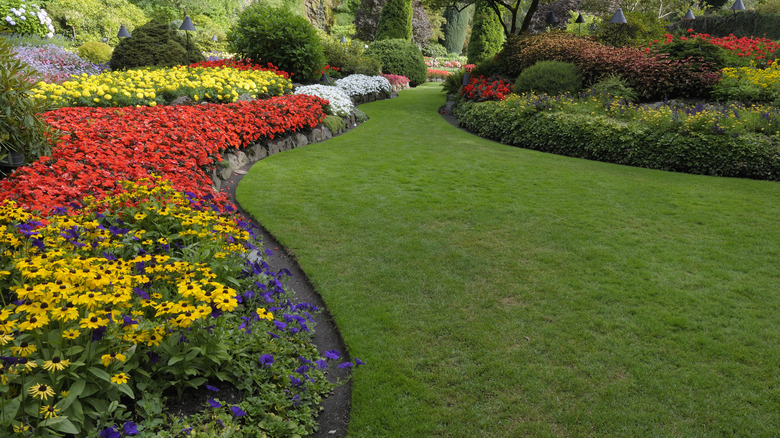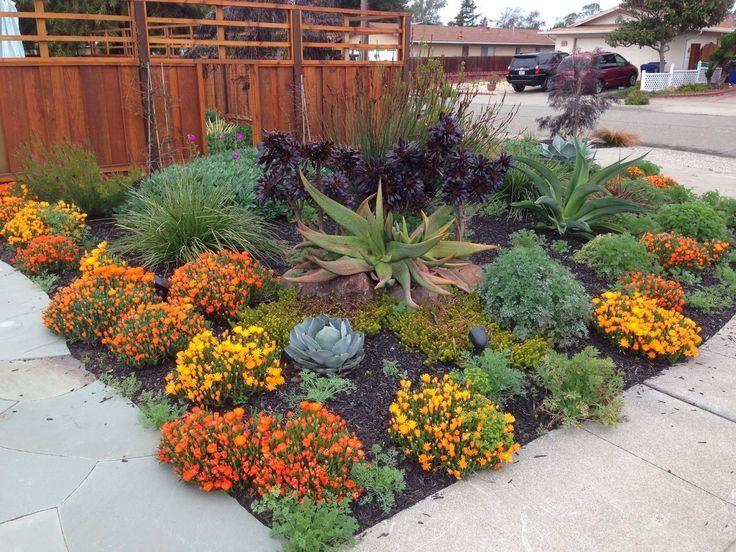Elevate Your Property's Visual With Sustainable Landscape Design Layouts and Eco-Friendly Practices

Advantages of Lasting Landscaping
Applying sustainable landscaping practices not just preserves natural resources however additionally advertises biodiversity and boosts overall environmental health and wellness. By picking environment-friendly landscape design techniques, homeowner can enjoy a wide variety of advantages that prolong past simply visual allure. One substantial benefit is the decrease of water intake via the usage of drought-resistant plants, rainfall yards, and efficient irrigation systems. This not only reduces utility bills but also contributes to water conservation efforts in the area.
Moreover, sustainable landscape design can boost dirt health and wellness by lessening making use of chemical fertilizers and pesticides, therefore developing a much healthier setting for plant development and advantageous soil organisms. This, subsequently, boosts the total resilience of the landscape to withstand ecological stress factors and climate change impacts - bush removal Jacksonville. In addition, sustainable landscape design methods can attract varied wild animals, including pollinators like and butterflies, promoting a more lively and balanced ecosystem within the property
Incorporating Native Plants
To construct upon the benefits of lasting landscape design, a calculated emphasis on incorporating native plants can even more enhance environmental strength and advertise biodiversity within the landscape. Indigenous plants are types that naturally occur in a particular area and have actually advanced to grow in the neighborhood environment, dirt conditions, and ecological community. By consisting of native plants in landscape design layouts, homeowner can minimize water use, lessen the requirement for chemical pesticides and fertilizers, and support the neighborhood wild animals population.
Integrating native plants also helps in preserving the distinct character and identification of a region's plants. These plants typically require much less upkeep as soon as established, making them a sustainable and economical landscaping solution in the lengthy run. In addition, native plants can draw in indigenous pollinators like bees and butterflies, contributing to the general health and wellness of the community.
When choosing native plants for landscape design projects, it is necessary to choose species that are fit to the specific ecological conditions of the site. Consulting with neighborhood baby rooms or arboretums can supply valuable advice on selecting the ideal indigenous plants for a particular location. By incorporating native plants into landscaping designs, homeowner can create stunning, lasting exterior spaces that benefit both the community and the environment.

Water Preservation Techniques
Reliable irrigation methods play a crucial role in lasting landscape design practices, making sure ideal water conservation efforts in outside spaces. Trickle irrigation supplies water directly to the origins of plants, reducing dissipation and runoff.
Along with advanced watering techniques, xeriscaping is another water-saving landscape design technique that concentrates on making use of drought-resistant plants, mulch, and reliable watering to produce a low-water landscape design - landscaping companies Jacksonville. By choosing indigenous plants that are appropriate to the local environment and soil conditions, residential or commercial property owners can minimize the need for extreme watering, ultimately preserving water and promoting a sustainable exterior atmosphere
Eco-Friendly Hardscaping Concepts
Enhancing outside rooms with green hardscaping functions can add dramatically to sustainable landscape design practices. Choose for products like reclaimed timber, recycled concrete, or natural stone to decrease environmental effect when taking into consideration hardscaping elements. These materials not only include an unique aesthetic allure to your outdoor area however additionally reduce the requirement for brand-new sources removal.
Carrying out absorptive leading options such as gravel or absorptive concrete can help in reducing water overflow and advertise groundwater recharge. These choices allow rainwater to seep into the ground, stopping disintegration and minimizing the burden on stormwater systems.
Integrating native plants into hardscaping designs can further improve eco-friendliness by supporting regional wildlife and decreasing the requirement for excessive watering or chemical treatments. By incorporating upright yards or environment-friendly wall surfaces, you can present extra plant life right into city setups, boosting air high quality and biodiversity.
Including energy-efficient illumination, such as solar-powered LEDs, into hardscaping styles can decrease electrical energy consumption and reduced your home's carbon footprint. Focusing on eco-friendly hardscaping ideas not just boosts the charm of your exterior space but additionally demonstrates a commitment to ecological stewardship.
Maintenance Tips for Lasting Landscapes

Consistently prune plants to promote healthy and balanced development and protect against overgrowth that can result in pest invasions or diseases. Usage natural plant foods Click This Link to nourish the soil and plants without damaging chemicals that can seep right into the setting. For hardscaping aspects, such as permeable pavers or rock paths, consistently tidy them to avoid debris buildup and maintain their functionality. By staying proactive with maintenance tasks, you can protect the appeal and sustainability of your landscape for several years ahead.
Final Thought
To conclude, sustainable landscape design techniques use many benefits for homeowner, from improving the aesthetic allure of the environments to promoting environmental conservation. By incorporating indigenous plants, applying water conservation techniques, and using green hardscaping concepts, property owners can produce lovely landscapes continue reading this that are likewise ecologically accountable. With appropriate maintenance, lasting landscapes can grow and contribute to a much healthier ecosystem for both humans and wild animals.
Moreover, lasting landscape design can boost soil wellness by decreasing the use of chemical fertilizers and chemicals, consequently creating a much healthier atmosphere for plant development and valuable dirt microorganisms.To build upon the advantages of sustainable landscape design, a strategic emphasis on integrating indigenous additional hints plants can additionally improve ecological strength and promote biodiversity within the landscape. By consisting of native plants in landscaping styles, home proprietors can decrease water use, minimize the requirement for chemical pesticides and plant foods, and support the regional wildlife populace.
These plants typically need less maintenance once developed, making them a lasting and cost-efficient landscape design service in the long run. By integrating native plants into landscaping designs, building proprietors can develop stunning, sustainable outside spaces that profit both the setting and the area.